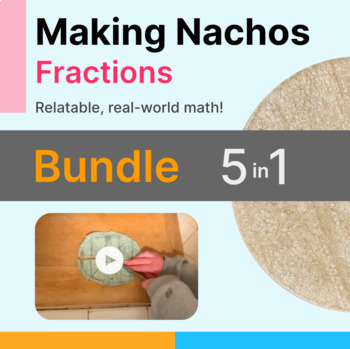3rd Grade Fractions in Real World: Making Nachos w/ Videos
- Google Drive™ folder

Description
This bundle includes a series of five lessons on teaching fractions in a way that ties the standards to real-world environments and activities kids can relate to. Most importantly the lesson is tied to real world videos in the kitchen that keeps kids engaged in the lesson and excited about the impact of their learning.
Elevated Interest is devoted to introducing math as a tool to solve real world problems. This interactive slide deck includes videos and images to engage students in understanding math applications in real-world situations. Key concepts in this lesson include fractions as numbers and quantities, the relationship between the numerator and denominator, unit fractions, and equal parts of a whole. Sharing tasks are emphasized throughout the lesson, with opportunities for students to make their own decisions, enhancing their sense of agency in problem solving and creation.





